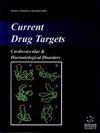类固醇诱发眼内高压的体内模型
IF 2.5
4区 医学
Q2 PHARMACOLOGY & PHARMACY
引用次数: 0
摘要
皮质类固醇具有抗炎和免疫抑制作用,因此被广泛使用,但往往会导致眼部并发症,包括眼压升高。如果不及时治疗,眼压过高会发展为视神经萎缩,最终导致类固醇诱发的青光眼,造成不可逆的视力损伤风险。约有 40% 的人在使用类固醇后会出现眼压升高,约有 6% 的人发展为青光眼。虽然类固醇诱发的青光眼通常是暂时的,如果治疗时间在一年以内也是可逆的,但长期暴露于类固醇可导致永久性视力损伤。类固醇诱发青光眼的发病机制被认为是由于房水外流阻力增加,主要是由于基质金属蛋白酶的表达减少。这种不足会促进细胞外基质的沉积和小梁网细胞的功能障碍。此外,肌动蛋白细胞骨架的改变会增加小梁网的硬度并改变其形态,从而进一步阻碍房水外流。分子变化,如 MYOC 基因表达的升高,也与限制眼液外流有关。为了研究类固醇诱发的青光眼,人们开发了各种动物模型,包括大鼠、小鼠、灵长类动物、兔子、牛、羊、猫和狗。这些模型在病理、病理生理学和分子方面与人类疾病相似,因此具有重要的研究价值。本综述旨在总结类固醇诱发眼压升高的常见动物模型,讨论它们的优势和局限性。目的是帮助研究人员为未来的研究选择合适的模型,从而促进对疾病机理的了解并制定预防策略。本文章由计算机程序翻译,如有差异,请以英文原文为准。
In Vivo Models of Steroid-Induced Intraocular Hypertension
Corticosteroids are widely utilized for their anti-inflammatory and immunosuppressive properties but often lead to ocular complications, including ocular hypertension. If untreated, ocular hypertension can progress to optic nerve atrophy and eventually result in steroid-induced glaucoma, which poses a risk of irreversible visual damage. Approximately 40% of individuals experience increased intraocular pressure after steroid use, and around 6% develop glaucoma. Although steroid-induced glaucoma is usually temporary and reversible if the treatment duration is under a year, prolonged exposure can cause permanent vision impairment. The pathogenesis of steroid-induced glaucoma is suggested to arise from increased outflow resistance of aqueous humor, primarily due to decreased expression of matrix metalloproteinases. This deficiency promotes the deposition of extracellular matrix and the dysfunction of trabecular meshwork cells. Additionally, modifications in the actin cytoskeleton increase the stiffness and alter the morphology of trabecular meshwork, further impeding aqueous humor outflow. Molecular changes, such as elevated expression of the MYOC gene, have also been implicated in restricting aqueous outflow. Various animal models, including rats, mice, primates, rabbits, cattle, sheep, cats, and dogs, have been developed to study steroid-induced glaucoma. These models exhibit pathological, pathophysiological, and molecular similarities to human disease, making them valuable for research. This review aims to summarize common animal models of steroid-induced ocular hypertension, discussing their advantages and limitations. The goal is to help researchers select appropriate models for future studies, thereby advancing the understanding of disease mechanisms and developing preventive strategies.
求助全文
通过发布文献求助,成功后即可免费获取论文全文。
去求助
来源期刊

Current drug targets
医学-药学
CiteScore
6.20
自引率
0.00%
发文量
127
审稿时长
3-8 weeks
期刊介绍:
Current Drug Targets aims to cover the latest and most outstanding developments on the medicinal chemistry and pharmacology of molecular drug targets e.g. disease specific proteins, receptors, enzymes, genes.
Current Drug Targets publishes guest edited thematic issues written by leaders in the field covering a range of current topics of drug targets. The journal also accepts for publication mini- & full-length review articles and drug clinical trial studies.
As the discovery, identification, characterization and validation of novel human drug targets for drug discovery continues to grow; this journal is essential reading for all pharmaceutical scientists involved in drug discovery and development.
 求助内容:
求助内容: 应助结果提醒方式:
应助结果提醒方式:


